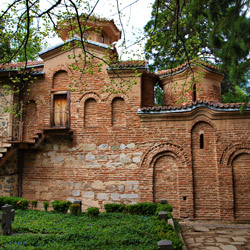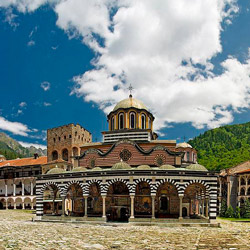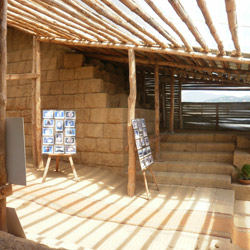You can choose and pay excursion and entertainments on hotel reception desk. Just ask for “Lions Europa Forum, Sofia 2016” additional programme..



Sofia and Rila Monastery
Sofia is the capital of Bulgaria. The city is situated in the 'Sofia field' in the western part of the country and is about 600 meters above sea level. The town is surrounded by the mountains Vitosha, Lyulin, Lozenska and Plana, which are attractive places for tourism not only for the residents of Sofia but for all visitors of the city. The town is an administrative, economic, political, cultural, trade and tourist centre. The history tells that in the 8-7th century before Christ, on the place of a former Neolithic settlement round the thermal springs, an ancient Thracian town had sprung up. Later the Romans conquered the town and gave it the name of Serdika after the Thracian tribe that lived there. In the Rome epoch (I – IV century A. D.) the town was growing as a center of the Inner Traci country. In the V – VI century, at the time of the Great Migration of the People there were invasions of Huns, Goths and Barbarians. From the middle of the VI century the town has developed as an important administrative and economic center of the Byzantine Empire with the name of Triaditsa. In 809 the town was included within the limits of the Bulgarian country with the name of Sredets. From the end of the XIV century till the seventies of the XIX century the city and the whole country were under the Ottoman rule. In the beginning of the XV century the town acquired its present name – Sofia. After the liberation from the Ottoman yoke and during the Bulgarian National Revival the city was chosen as a capital. Our capital has rich landmarks, some of which are proclaimed as national cultural monuments. The biggest universities and research institutes are situated here. A great number of churches are located in Sofia, the most famous of which are: The Cathedral Church of St. Alexander Nevski, St. Sofia dating back to the 4th – 6th century, the Russian church St. Nikolai, the rotunda St. George and St. Nedelya. Here are situated the National Historical Museum, the Museum of Foreign Arts, the Earth and People Museum , the National Church Museum and others. The biggest zoo in the Balkan Peninsula and many city parks are attractions for visitors.
The Boyana Church is a medieval Bulgarian Orthodox church situated on the outskirts of Sofia, the capital of Bulgaria, in the Boyana quarter. In 1979, the building was added to the UNESCO World Heritage List.
The east wing of the two-storey church was originally constructed in the late 10th or early 11th century, then the central wing was added in the 13th century under the Second Bulgarian Empire, the whole building being finished with a further expansion to the west in the middle of the 19th century. A total of 89 scenes with 240 human images are depicted on the walls of the church.
Rila monastery "St. Ivan Rilski" is one of the most impressive monuments of the Bulgarian architecture and art and is located 129 km south from Sofia. It is the oldest inhabited cloister on our country. It was also the biggest literary center in Bulgaria during the Ottoman slavery.
The monastery is founded in 10th century by the Bulgarian hermit Ivan Rilski. On its present place, the monastery is erected in 14th century as at the beginning only one deference tower is built. The succeeding most important part of the building of the monastery is the period 1816-1870 when, with funds, collected from the whole nation and the hard work of many master-builders, wood-cutters, icon-painters, sculptors and artists, is built the biggest Bulgarian monastery. It is announced as an international monument by UNESCO.
Its present day monumental appearance dates from the mid- 19th century. Visitors are fascinated by the pure and harmonious line of the buildings, the exquisite colonnades, arches and vaults. The monastery’s most treasured historic and artistic monuments include: the 14th c. Hrelyo’s Tower; the five-domed Birth of Blessed Virgin Church; the original 19th c. monastery’s kitchen and the rich museum collection of valuable old manuscripts and documents, charters and icons, an ethnographic exhibition of fabrics, jewelry, carpets and wrought iron objects, and a library containing more than 16 000 books.


Plovdiv
Plovdiv is the second-largest city in Bulgaria after Sofia. It is the administrative center of Plovdiv Province in southern Bulgaria and three municipalities (Plovdiv, Maritsa and Rodopi), as well as the largest and most important city in Northern Thrace and the wider international historical region of Thrace. The city is an important economic, transport, cultural and educational center.
One of Europe's oldest cities, it was originally a Thracian settlement before becoming a major city ruled by Greeks and Romans in Antiquity. In the Middle Ages, it retained its strategic regional importance, changing hands between the Byzantine and Bulgarian Empires. It came under Ottoman rule in the 14th century. In 1878, Plovdiv was made the capital of the autonomous Ottoman region of Eastern Rumelia; in 1885, it became part of Bulgaria with the unification of that region and the Principality of Bulgaria.
Plovdiv is situated in the southern part of the Plovdiv Plain on the two banks of the Maritsa River. The city has historically developed on seven syenite hills, some of which are 250 m high. Because of these seven hills, Plovdiv is often referred to in Bulgaria as "The City of the Seven Hills".
Plovdiv is hosting to economic and cultural events such as the International Fair Plovdiv, the international theatrical festival "A scene on a crossroad", the TV festival "The golden chest". There are many remains preserved from Antiquity such as the Ancient amphitheatre, Roman Odeon, Roman Stadium, the archaeological complex Eirene and others.
The Thracian Temple Complex at Starosel is the most grandiose Thracian architectural monument found until now. The tomb is turned towards the Thracian lowland, at the foot of Sredna Gora Mountain. It has an exquisite facade, which shows that it was built as important architectural monument. It is supposed that a Thracian ruler from 5-4th century before Christ is buried there. It is possible that this is Sitalk who was the most powerful ruler of the Odrin's Kingdom. The entrance of the tomb is 1.60 meters wide and is fortified with beautiful limestone columns. The inner hall is not yet open, but archeologists suppose that there will be many precious items there. But it is possible that the tomb had been robbed back in antiquity. There are also statements that this mound is just a part of a cult complex. That the entrance looks towards the whole of Thrace shows the significance of the tomb.



